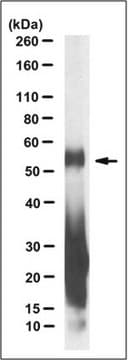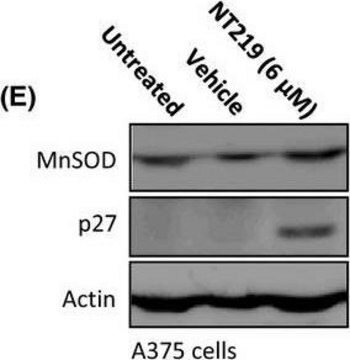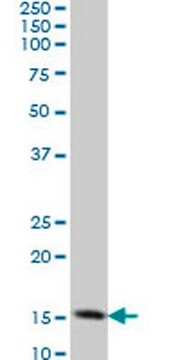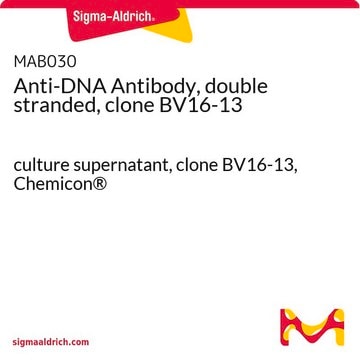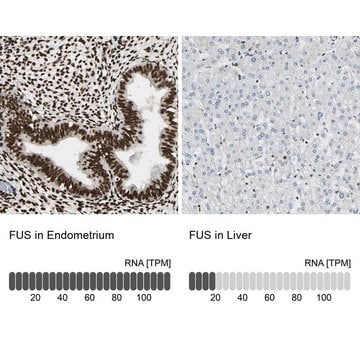MABN778
Anti-C9ORF72/C9RANT (poly-GR) Antibody, clone 5A2
clone 5A2, 1 mg/mL, from rat
Sinônimo(s):
c9orf72
About This Item
Produtos recomendados
fonte biológica
rat
Nível de qualidade
forma do anticorpo
purified antibody
tipo de produto de anticorpo
primary antibodies
clone
5A2, monoclonal
reatividade de espécies
human
reatividade da espécie (prevista por homologia)
all
concentração
1 mg/mL
técnica(s)
immunohistochemistry: suitable
western blot: suitable
Isotipo
IgG2aκ
Condições de expedição
wet ice
modificação pós-traducional do alvo
unmodified
Informações sobre genes
human ... C9ORF72(203228)
Descrição geral
Especificidade
Imunogênio
Aplicação
Neuroscience
Neurodegenerative Diseases
Qualidade
Western Blotting Analysis: 0.2 μg of this antibody detected 10 μg of GR-GST recombinant protein with 15 GR repeats.
Descrição-alvo
forma física
Armazenamento e estabilidade
Exoneração de responsabilidade
Não está encontrando o produto certo?
Experimente o nosso Ferramenta de seleção de produtos.
Código de classe de armazenamento
12 - Non Combustible Liquids
Classe de risco de água (WGK)
WGK 1
Ponto de fulgor (°F)
Not applicable
Ponto de fulgor (°C)
Not applicable
Certificados de análise (COA)
Busque Certificados de análise (COA) digitando o Número do Lote do produto. Os números de lote e remessa podem ser encontrados no rótulo de um produto após a palavra “Lot” ou “Batch”.
Já possui este produto?
Encontre a documentação dos produtos que você adquiriu recentemente na biblioteca de documentos.
Active Filters
Nossa equipe de cientistas tem experiência em todas as áreas de pesquisa, incluindo Life Sciences, ciência de materiais, síntese química, cromatografia, química analítica e muitas outras.
Entre em contato com a assistência técnica